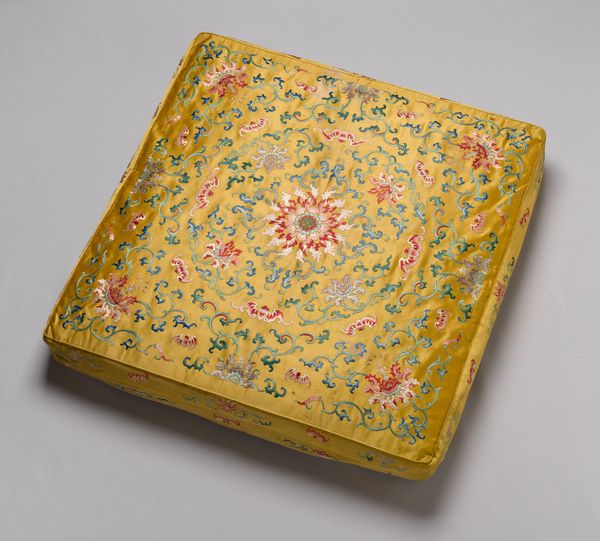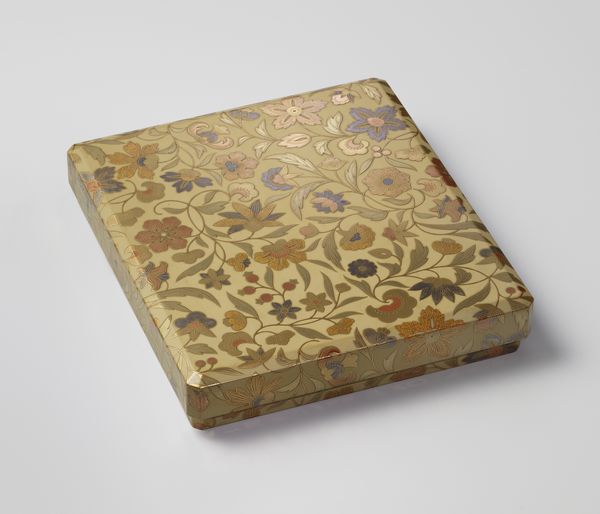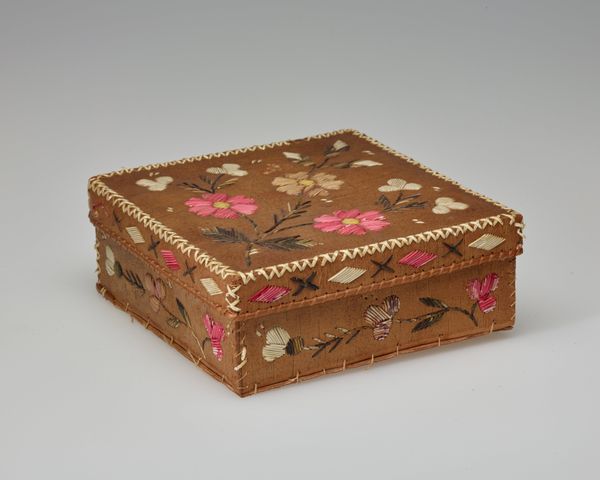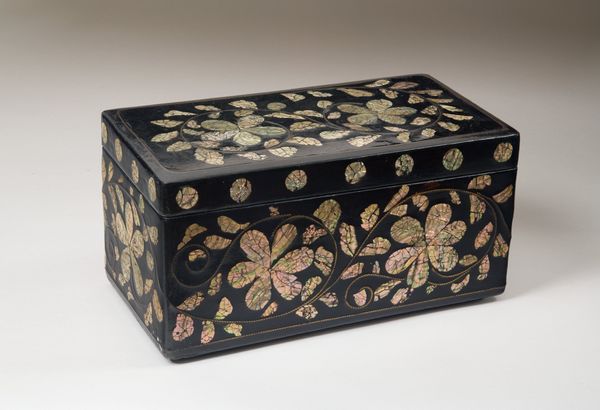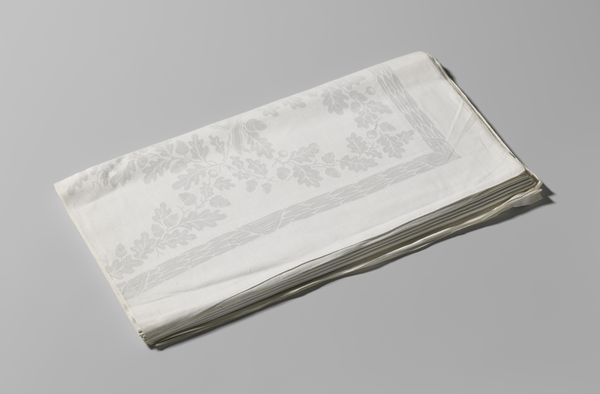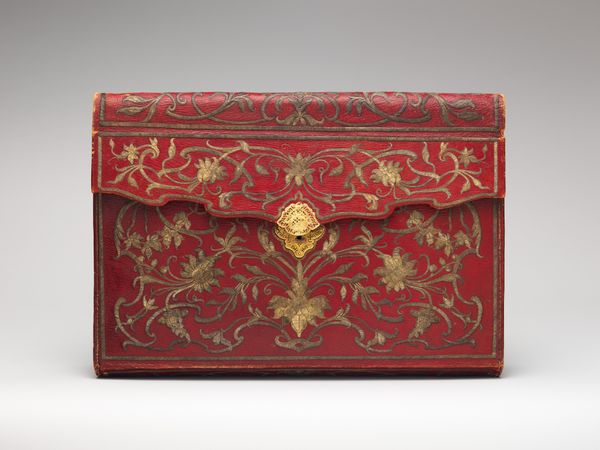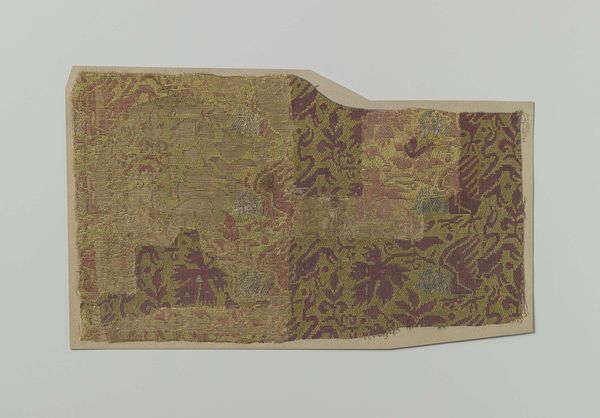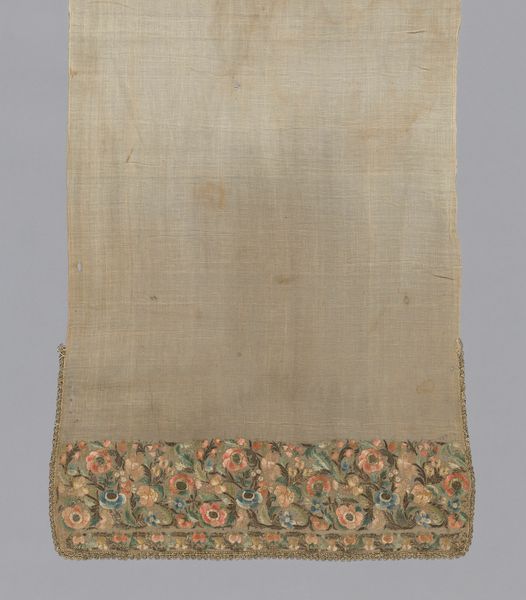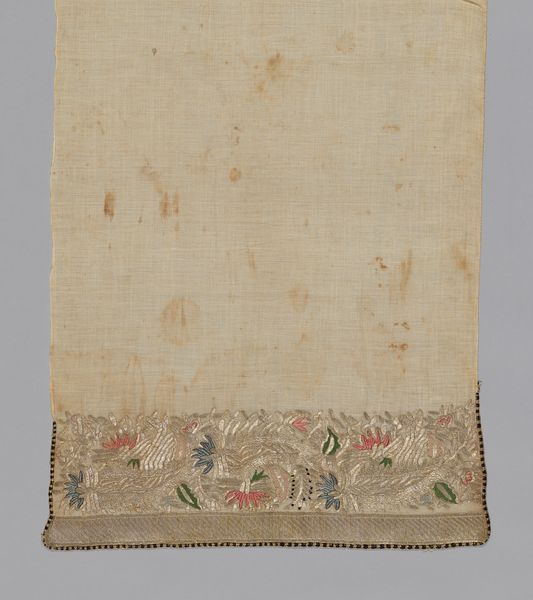
Tussenzetsel van zwarte tule met gekleurde applicatiekant op karton c. 1925
0:00
0:00
gustavschnitzler
Rijksmuseum
mixed-media, fibre-art, textile
#
mixed-media
#
fibre-art
#
textile
Dimensions: width 7.5 cm, length 25.8 cm, width 22.2 cm
Copyright: Rijks Museum: Open Domain
Editor: This is "Tussenzetsel van zwarte tule met gekleurde applicatiekant op karton," a mixed-media piece from around 1925. It features black tulle and colorful lace appliqués. It looks delicate and intricate, like something from another era. How would you interpret its significance? Curator: Seeing this, I think about the socio-political context of women's labor. Objects like this, made of lace and tulle, represent countless hours of often invisible, undervalued work performed by women. It makes me wonder, what kind of woman was creating or using this trim? Was she an artisan, a factory worker, or a consumer participating in a specific vision of femininity? Editor: That's a great question. It hadn't occurred to me to consider the individual woman or women connected to it. Do you see the floral pattern as significant? Curator: Definitely. Floral patterns in the decorative arts, particularly during this period, were often linked to ideals of femininity and domesticity, which simultaneously empowered and restricted women. But it's important to analyze what kinds of flowers are depicted, as each flower carries certain meaning within its social context, particularly when considering class, region, and religion. Do you know what kinds of flowers are being shown? Editor: Now that you point it out, the flowers appear abstract, generalized, without a clearly identifiable species. Does that influence your analysis? Curator: It does. That generalization invites a broader consideration of "femininity" in design, moving beyond the specifics of identity into wider and potentially universal considerations of "women" and visual appeal during the period. Now what considerations does that invite? Editor: Considering your background, I now think that something seemingly so delicate and beautiful actually represents much broader societal themes related to labor, gender, and identity. Curator: Precisely! By looking critically at seemingly simple pieces like this, we can unlock deeper insights into the social and cultural forces that shape our world.
Comments
No comments
Be the first to comment and join the conversation on the ultimate creative platform.
